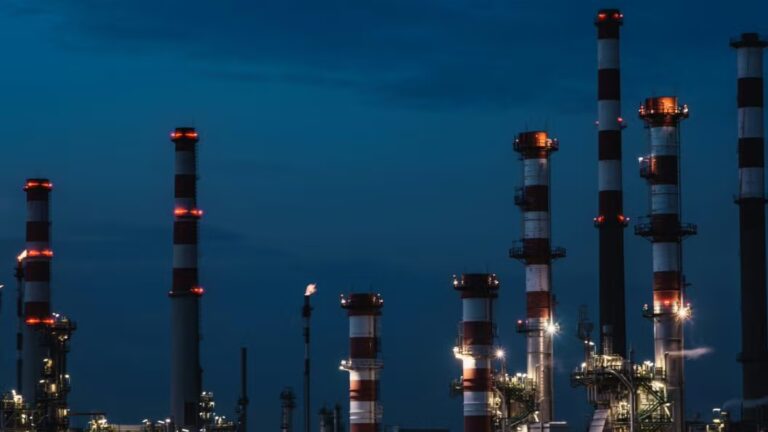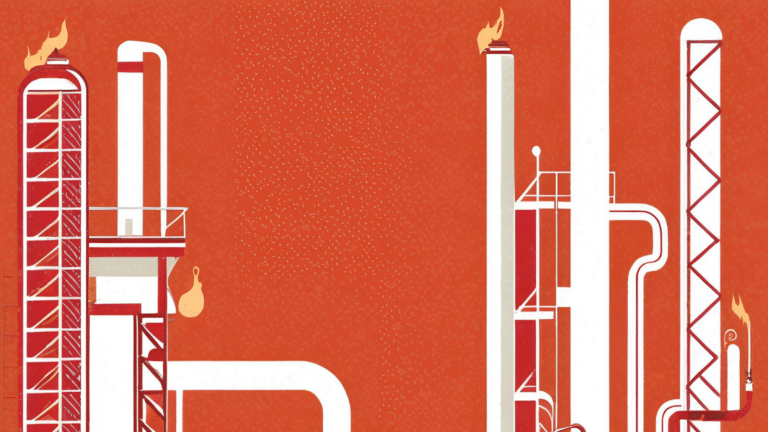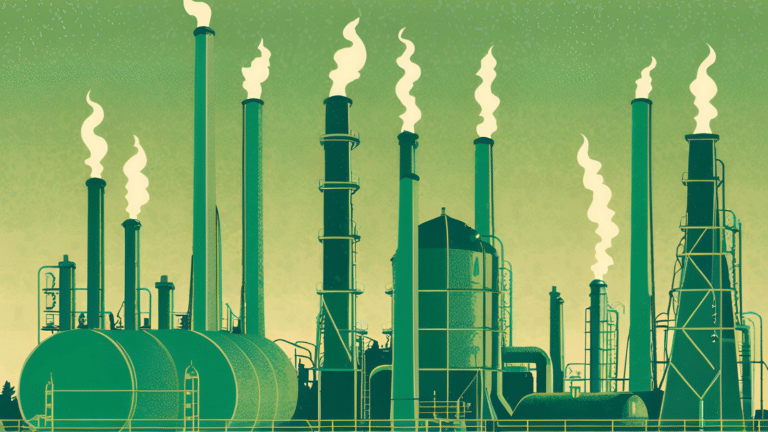This commentary represents the research and views of the author. It does not necessarily represent the views of the Center on Global Energy Policy. The piece may be subject to further revision. Contributions to SIPA for the benefit of CGEP are general use gifts, which gives the Center discretion in how it allocates these funds. More information is available at https://energypolicy.columbia.edu/about/partners. Rare cases of sponsored projects are clearly indicated.
At its August 2022 ministerial meeting, the Organization of the Petroleum Exporting Countries (OPEC) and 10 additional oil exporters (together known as OPEC+) announced an increase of only 100,000 barrels per day (b/d) of crude supply for September.[1] This represented a meaningful slowdown from its addition of 648,000 b/d for July and August, and possibly the smallest increase in production targets since quotas were first introduced by OPEC in 1982.[2] In explaining the increase, the official press release for the meeting referred to “limited availability of excess capacity” and noted that “chronic underinvestment in the oil sector has reduced excess capacities along the value chain,” highlighting the alliance’s limited ability to bring significantly more barrels to market. This marked the first time since the current agreement was put in place in April 2020[3] that an official OPEC monthly meeting press release focused on spare capacity rather than uncertainty in global demand outlooks due to the recurring impacts of the pandemic and uneven economic recovery globally. While the Biden administration has welcomed the OPEC+ announcement as a positive step,[4] most analysts have discounted the potential impact of an increase of just 0.1 percent of global supply.[5] In reality, the move is little more than a signal that the group is responsive to calls for increasing supply.
Analyzing the shift in OPEC+ strategy implied by this slowdown, this commentary explores what it signals for the alliance’s priorities and cohesion, spare capacity, and future strategy amid demand uncertainties due to an increasingly cloudy global macroeconomic backdrop and an increasingly volatile oil market. If macroeconomic headwinds dampen demand, maintaining cohesion within the group will likely drive its strategic choices; if demand growth remains robust, the group will likely focus on announcing and attempting to achieve credible production targets.
Group Cohesion
The August press release explicitly noted “the value and importance of maintaining consensus as essential to the cohesion of OPEC and participating non-OPEC oil-producing countries.”[6] OPEC has been repeatedly stressing the goal of cohesion[7] because it is essential to maintaining production levels or even cutting them, especially in the face of challenging geopolitical and trading conditions that could otherwise jeopardize the functioning of the group. The marginal September supply increase and the recent chatter about a possible cut for October are therefore is therefore indicative of this priority.[8]
One of OPEC’s core members, Russia, which, along with Saudi Arabia, has the largest production quota within the alliance, is facing multiple uncertainties in its crude oil and refined product export prospects. The latest set of European Union (EU) sanctions on Russia includes a complete ban on seaborne crude and product imports that will be implemented incrementally over the next six to eight months.[9] Once fully rolled out, this ban will affect 90 percent of Russian exports to the EU. As noted by the authors in previous work, Russia has diverted some of these sanctioned barrels to Asia by offering discounts as large as $20–$30 per barrel over the last few months,[10] although such discounts have compressed more recently.[11] Some estimates put this volume of Russian exports to Asia at 1.85 million b/d in July 2022, which is twice as high as a year ago.[12]
Were the alliance to increase production targets significantly now, it may give the impression that it is backfilling the lost Russian barrels, likely at the expense of the unity it has sustained since the current agreement was signed. Given how disastrous competition among members has been to OPEC+ in the past, the alliance would want to avoid the recurrence of division.[13] A more likely course is that OPEC+ will redirect supplies between members such that core members in the Middle East temporarily cede market share in Asia to Asia and increase their cargoes to Europe in return.[14] The alliance also prefers a higher price environment because it allows member governments to refill coffers that were depleted during the COVID-19 downturn. Prior to 2020, the group’s defensive strategy translated to a price range of $60–$70 per barrel,[15] but its lack of alternative sources to increase supply and apparent inability to increase production materially (as discussed below) have likely forced it to increase that range to $80–$90 per barrel.
The moderate increase in supply for September is little more than the alliance’s acknowledgment of the asks from Western governments, especially leading up to and during President Biden’s recent trip to Saudi Arabia. A possible supply cut around the corner supports the shifting price preferences. The group’s internal dynamics remain its primary focus—and this will continue to be the case through the end of the year and into 2023 despite any global inflationary pressures.
Spare Capacity and Crisis Response
In July 2022, the alliance’s actual production lagged behind its production target by 2.8 million b/d, higher than the shortfall in June despite the largest production increase since February 2022.[16] Some member countries in Africa, Central Asia, and Southeast Asia have chronically underperformed, and many appear to be in structural decline. Nevertheless, as the group looks to 2023 and beyond, it has so far avoided downward revisions in quota allocations.
The slowdown strategy could also signal concerns within OPEC+ about spare capacity within the alliance as a whole. Saudi Aramco’s CEO, Amin Nasser, remarked as far back as March 2022 that the world’s spare capacity was at best 2 percent of total production.[17] At this point, group spare capacity largely rests with Saudi Arabia and the United Arab Emirates (UAE). There is also uncertainty around Russian production and exports going forward due to Western sanctions. Some analysts have pegged readily available spare as low as 400,000 b/d.[18] Others have put the figure as high as 3 million b/d, excluding sanctioned capacity in Iran, which assumes total production capacity of 12 million b/d for Saudi Arabia and 4 million b/d for the UAE, though it is doubtful whether these high levels can be sustained for an extended period.[19] It is also important to factor in the spare capacity that must be preserved as dry powder for planned maintenance outages, about which Saudi Arabia has been vocal,[20] or, more importantly, as a buffer for the world in the event of unforeseen disruptions such as those resulting from attacks on oil facilities.[21]
OPEC+ has repeatedly highlighted concerns about industry-wide underinvestment in upstream capacity and production, including in the August press release. This view appears to reflect a general sentiment in the industry but also, and more pointedly, among the majority of group members who have difficulty increasing production. Generally, the most effective way to unlock spending is to ride the wave of a sustained period of higher prices. As noted above, such an environment is precisely the type that the group is trying to support, though key members such as Saudi Arabia have stated that they expect every major producer (within OPEC+ or outside) to expand capacity.[22]
Demand Uncertainties
Looming over OPEC+ decision making, and the oil market in general, are the growing dark clouds of the global economy. In its most recent update, the International Monetary Fund (IMF) highlighted that “the outlook has darkened significantly since April. The world may soon be teetering on the edge of a global recession, only two years after the last one.”[23] By technical definitions used in past economic cycles, the US economy is already in a recession. Even as the US labor market continues to recover, consumers are being weighed down by high prices, and the near-term macroeconomic outlook remains murky.[24] In Europe, the United Kingdom is forecasted to enter a recession by the end of the year,[25] and the EU’s economic prospects are rapidly deteriorating, especially for member states such as Hungary, the Czech Republic, and Slovakia, which are dependent on Russian natural gas imports.[26] The IMF estimates that the gross domestic product of the EU as a whole could drop by as much as 1.8 percent, and that of Russian gas-dependent countries by about 4 percent. Other countries such as Germany and Italy could see economic contractions as large as 3 and 4 percent, respectively.[27] China continues to struggle with its “zero-COVID” policy in addition to real estate and other domestic economic risks.[28] OPEC expects China’s crude imports to remain depressed after ample inventories and continued lockdown measures brought import levels to a four-year low in June 2022.[29] Peripheral economies across the world are battling inflation and increasing social unrest.
All of these data points and trends indicate the uncertainties around economic growth prospects globally and risks in oil demand forecasts. Wounds from the COVID-19 downturn are fresh in the memories of OPEC+ members. If oil demand were to fall precipitously as early as the end of the year, the alliance would again need to institute production cuts to stabilize the market and, more importantly, support prices. With crude oil already retreating well below $100 per barrel through most of August, adding more supply could slash prices to the $60–$70 range or potentially lower, which the group will be looking to avoid. This bearish economic outlook also affects OPEC+ strategy, especially if the group chooses to increase production by larger volumes. The increasingly faint possibility of Iranian barrels returning to the market is yet another factor that the group will keep an eye on. Lastly, OPEC+ has also cited weak oil market trading liquidity—and corresponding greater volatility—as a reason to support the market.[30]
While uncertainties and downside risks hover and will keep OPEC+ cautious, further potential strains on supply are likely, providing some upside risks to prices. In particular, the large (800,000 to 1 million b/d) US Strategic Petroleum Reserve releases of the last several months will cease after October,[31] the EU will attempt its embargo of oil and product imports from Russia later this year, and high natural gas and coal prices could provide an atypical boost to oil demand for electricity generation in the winter months. These factors combined could quickly push prices higher again.
Looking to 2023 and Beyond
OPEC+ member countries have benefitted from the high oil price environment. But amid significant macroeconomic headwinds that could derail demand growth, the alliance will need to remain united to maintain elevated price levels. Here, the relationship between Russia, the second largest producer among all the member countries, and the rest of OPEC+ is critical to group cohesion and will likely be prioritized.
If demand continues to recover strongly, OPEC+ is likely to resist raising production targets significantly and avoid any risk of undermining the group’s credibility. The ability of the alliance to ramp up production is highly questionable as a number of its members have not been able to meet production targets for many months. Therefore, the group will likely keep its production targets at current levels even if the market demands more barrels.
OPEC+ strategy over the next few months is a tightrope walk. Further supply increases after year-end will be a key topic on the agenda. On the downside, if demand growth starts to soften and market liquidity/volatility remains, maintaining unity within the group, especially between the two largest producers, Saudi Arabia and Russia, will likely be the key strategic objective. On the upside, if demand growth remains robust, the focus will likely be back on production capacity, and OPEC+ will have to consider how it can message its inability to increase production by significant volumes while maintaining the credibility of its production targets. What is certain is that high price volatility and the significant upside and downside risks to prices will put an even greater spotlight on OPEC+ going forward, especially in terms of its priorities, shortcomings in its current quota allocation, and decision making.
Notes
[1] Organization of the Petroleum Exporting Countries, “31st OPEC and Non-OPEC Ministerial Meeting,” No. 23/2022, August 3, 2022, https://www.opec.org/opec_web/en/press_room/6984.htm.
[2] Organization of the Petroleum Exporting Countries, “29th OPEC and Non-OPEC Ministerial Meeting,” No. 12/2022, June 2, 2022, https://www.opec.org/opec_web/en/press_room/6882.htm.
[3] Organization of the Petroleum Exporting Countries, “The 10th (Extraordinary) OPEC and Non-OPEC Ministerial Meeting Concludes,” No. 6/2020, April 12, 2020, https://www.opec.org/opec_web/en/press_room/5891.htm.
[4] Ibid.
[5] Salma El Wardany, Grant Smith, and Annmarie Hordern, “OPEC+ Answers Biden’s Diplomacy with ‘Minuscule’ Output Hike,” Bloomberg, August 3, 2022, https://www.bloomberg.com/news/articles/2022-08-03/opec-panel-proposes-small-oil-output-increase-for-septemberhttps://www.reuters.com/business/energy/opec-meets-amid-output-struggles-us-pressure-more-oil-2022-08-03/.
[6] Organization of the Petroleum Exporting Countries, “31st OPEC and Non-OPEC Ministerial Meeting.”
[7] Saudi Press Agency, “Minister of Energy: OPEC+ Has the Means to Deal with Market Challenges Including Cutting Production at Any Time and in Different Forms,” August 22, 2022, https://www.spa.gov.sa/viewstory.php?lang=en&newsid=2378353.
[8] Amena Bakr, “OPEC-Plus Unites Around Volatility Alarm,” Energy Intelligence Group, August 26, 2022, https://www.energyintel.com/00000182-d9d1-d8d6-aff3-fbd3e9160000.
[9] European Commission, “Russia’s War on Ukraine: EU Adopts Sixth Package of Sanctions against Russia,” June 3, 2022, https://ec.europa.eu/commission/presscorner/detail/en/IP_22_2802.
[10] Kaushik Deb and Abhiram Rajendran, “How Sanctions on Russian Crude Oil Could Impact Market Share for Major Regional Suppliers,” Columbia SIPA Center on Global Energy Policy, May 26, 2022, https://www.energypolicy.columbia.edu/research/commentary/how-sanctions-russian-crude-oil-could-impact-market-share-major-regional-suppliers.
[11] Muyu Xu and Nidhi Verma, “Russian Crude Prices Recover on Strong India, China Demand,” Reuters, August 7, 2022, https://www.reuters.com/business/energy/russian-crude-prices-recover-strong-india-china-demand-2022-08-05/https://www.bloomberg.com/news/articles/2022-08-04/russia-undercuts-saudi-oil-in-india-as-competition-heats-up.
[12] Clyde Russell, “Russian Crude Is More Reliant on India and China, but Signs of a Peak,” Reuters, August 9, 2022, https://www.reuters.com/business/russian-crude-is-more-reliant-india-china-signs-peak-russell-2022-08-09/.
[13] Pippa Stevens, “Oil Plunges 24% for Worst Day Since 1991, Hits Multi-Year Low after OPEC Deal Failure Sparks Price War,” CNBC, last modified April 6, 2020, https://www.cnbc.com/2020/03/08/oil-plummets-30percent-as-opec-deal-failure-sparks-price-war-fears.html.
[14] Kaushik Deb and Abhiram Rajendran, “Q&A: Challenges for OPEC+ amid the Russian Invasion of Ukraine,” Columbia SIPA Center on Global Energy Policy, March 17, 2022, https://www.energypolicy.columbia.edu/research/qa/qa-challenges-opec-amid-russian-invasion-ukraine#_edn15.
[15] Irina Slav, “OPEC Aims for $60–$70 Oil,” OilPrice.com, June 18, 2019, https://oilprice.com/Energy/Energy-General/OPEC-Aims-For-60-70-Oil.htmlhttps://www.cnbc.com/2019/03/18/60-70-oil-is-the-pain-threshold-for-the-us-and-opec-jpmorgan-says.html.
[16] Eklavya Gupte, Herman Wang, and Rosemary Griffin, “OPEC+ Crude Oil Output Makes Biggest Gain in Five Months, but Gap with Quotas Grows: Platts Survey,” S&P Global Commodity Insights, August 9, 2022, https://www.spglobal.com/commodityinsights/en/market-insights/latest-news/oil/080922-opec-crude-oil-output-makes-biggest-gain-in-five-months-but-gap-with-quotas-grows-platts-survey.
[17] Reuters, “Aramco CEO Says Ukraine Invasion Has Accelerated Global Energy Crisis,” March 8, 2022, https://www.reuters.com/business/energy/ceraweek-opec-has-no-control-over-events-roiling-global-oil-markets-sec-gen-2022-03-07/.
[18] Gupte, Wang, and Griffin, “OPEC+ Crude Oil Output Makes Biggest Gain in Five Months.”
[19] Javier Blas, “Can Saudi Aramco Meet Its Oil Production Promises?,” Bloomberg, June 29, 2022, https://www.bloomberg.com/opinion/articles/2022-06-29/can-saudi-aramco-meet-its-oil-production-promises?cmpid=BBBXT080422_ENERGY&utm_medium=email&utm_source=newsletter&utm_term=220804&utm_campaign=energy.
[20] Saudi Aramco, “Prospectus,” November 9, 2019, https://www.aramco.com/-/media/images/investors/saudi-aramco-prospectus-cma-en.pdf?hash=8887077F5ACCE26916E6DA8A953B44771D0C46F1&la=en.
[21] Heather Greenly, Michael Ratner, and Christopher Blanchard, “Attacks on Saudi Oil Facilities: Effects and Responses,” Congressional Research Service, IN11173, October 1, 2019, https://crsreports.congress.gov/product/pdf/IN/IN11173/2.
[22] Nishant Ugal, “No Capacity: Saudi Arabia Cannot Expand Oil Production beyond 13 Million bpd,” Upstream, July 18, 2022, https://www.upstreamonline.com/production/no-capacity-saudi-arabia-cannot-expand-oil-production-beyond-13-million-bpd/2-1-1262005.
[23] International Monetary Fund, “World Economic Outlook Update July 2022: Gloomy and More Uncertain,” July 2022, https://www.imf.org/-/media/Files/Publications/WEO/2022/Update/July/English/text-en.ashx.
[24] Mohamed El-Erian, “It Is Too Early to Declare Risk of US Recession Is Over,” Financial Times, August 9, 2022, https://www.ft.com/content/9785a4f6-feae-4bc0-af01-049b3617fcdb.
[25] Bank of England, “Monetary Policy Report—August 2022,” August 4, 2022, https://www.bankofengland.co.uk/monetary-policy-report/2022/august-2022.
[26] European Commission, “European Economic Forecast: Summer 2022,” Institutional Paper 183, July 2022, https://economy-finance.ec.europa.eu/document/download/cbc24af5-782d-461c-aabd-312793120e2e_en?filename=ip183_en.pdf.
[27] Gabriel Di Bella, Mark Flanagan, Karim Foda, Svitlana Maslova, et al., “Natural Gas in Europe: The Potential Impact of Disruptions to Supply,” Working Paper No. 2022/145, International Monetary Fund, July 19, 2022, https://www.imf.org/en/Publications/WP/Issues/2022/07/18/Natural-Gas-in-Europe-The-Potential-Impact-of-Disruptions-to-Supply-520934.
[28] The World Bank, “Between Shocks and Stimulus: China Economic Update—June 2022,” June 8, 2022, https://documents1.worldbank.org/curated/en/099640106102210762/pdf/P17579708f26d5018098840f1ad978bb54b.pdf.
[29] Organization of the Petroleum Exporting Countries, “OPEC Monthly Oil Market Report,” August 11, 2022, https://momr.opec.org/pdf-download/.
[30] Bakr, “OPEC-Plus Unites Around Volatility Alarm.”
[31] Department of Energy, “DOE Announces Additional Notice of Sale of Crude Oil from the Strategic Petroleum Reserve,” May 24, 2022, https://www.energy.gov/articles/doe-announces-additional-notice-sale-crude-oil-strategic-petroleum-reserve.




